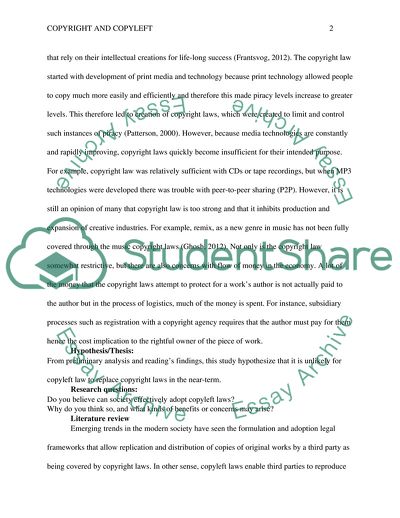Cite this document
(Copyright and Copyleft Research Paper Example | Topics and Well Written Essays - 2000 words, n.d.)
Copyright and Copyleft Research Paper Example | Topics and Well Written Essays - 2000 words. https://studentshare.org/journalism-communication/1815607-copy-right-and-copy-left
Copyright and Copyleft Research Paper Example | Topics and Well Written Essays - 2000 words. https://studentshare.org/journalism-communication/1815607-copy-right-and-copy-left
(Copyright and Copyleft Research Paper Example | Topics and Well Written Essays - 2000 Words)
Copyright and Copyleft Research Paper Example | Topics and Well Written Essays - 2000 Words. https://studentshare.org/journalism-communication/1815607-copy-right-and-copy-left.
Copyright and Copyleft Research Paper Example | Topics and Well Written Essays - 2000 Words. https://studentshare.org/journalism-communication/1815607-copy-right-and-copy-left.
“Copyright and Copyleft Research Paper Example | Topics and Well Written Essays - 2000 Words”. https://studentshare.org/journalism-communication/1815607-copy-right-and-copy-left.


